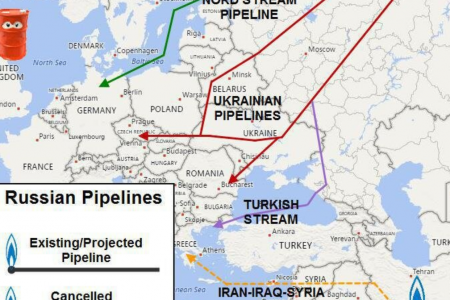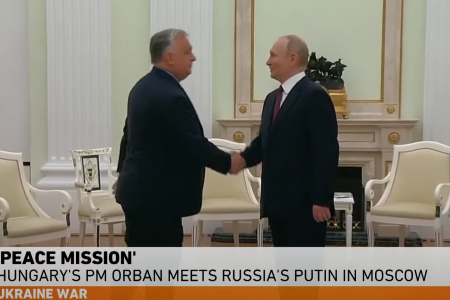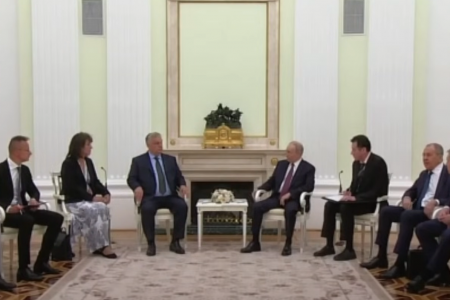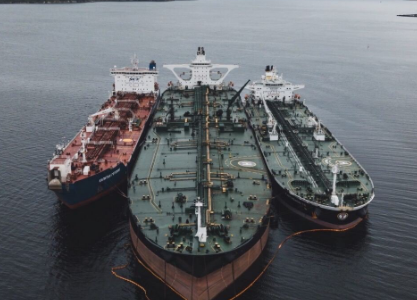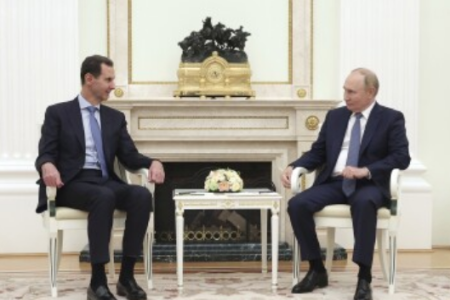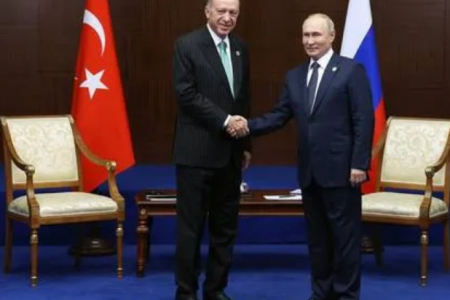These days, the situation in the East Sea (South China Sea) has become hot in the international forum with successive moves of the parties involved in sovereignty disputes over the important international waters.
Most recently, the US sent a diplomatic note opposing China’s illegal claim in the South China Sea to the United Nations.

US Secretary of State Mike Pompeo on June 3 announced that his country had sent a note to the United Nations to protest China’s “illegal and dangerous” claims in the South China Sea.
The U.S. note sent to the Secretary-General of the United Nations for the purpose of supporting Malaysia’s position to the Continental Shelf Boundary Commission rejecting China’s appeal on 12 December 2019, and objected to the claims of China which do not comply with the UN Convention on the Law of the Sea 1982 (UNCLOS) and requires the Secretary-General of the United Nations to circulate to all members of the United Nations.
Observers commented that the reason the US waited until six months to send a diplomatic note against China was because the US wanted the countries involved in the region to speak first, namely Malaysia, Vietnam, the Philippines and Indonesia.
Through this, the US expressed its support for countries in the area of protection of international law, including the UNCLOS and the Judgment of the Arbitral Tribunal in July 2016 in the Philippines case against China.
Not long ago, on May 26, Indonesia sent a note to the United Nations stating its support for the 2016 judgment of the Permanent Court of Arbitration in the case the Philippines against China.

Last December, many Chinese ships swept into the waters surrounding the Natuna Islands, prompting Indonesia to summon Chinese ambassador in Jakarta to protest, and to deploy warships and fighter aircraft to the region. Chinese vessels left in January this year, after Indonesian President Joko Widodo visited a military base on the Natuna Islands to assert Indonesian sovereignty.
In a press conference on May 6, Indonesian Foreign Minister Retno Marsudi voiced concern that recent developments in the South China Sea could risk escalating tensions amid global efforts to fight the COVID-19 pandemic and said Indonesia continues to closely monitor developments in the South China Sea. At the same time, she stressed the importance of maintaining peace and stability in the region to ensure freedom of navigation and overflight in the South China Sea.
Then, at an online press conference on June 4, Foreign Minister Retno Marsudi said: “China’s sovereignty claims may affect Indonesia’s exclusive economic zone … The Indonesian government is always the most consistent in its own position.”
Indonesia is the largest country in the region and a founding member state of ASEAN. Indonesia’s claims in the South China Sea do not conflict directly with China’s illegal claims. Indonesia’s exclusive economic zone around the Natuna Islands in the south of the South China Sea is overlapping with China’s nine-dash line. It can be said that Indonesia is the least threatened country due to the unruly actions of China.
But Indonesia’s voice is important. The island nation has recognized the need to defend international law in the region with other countries in order to protect its own national security and interests.
This event marked a failure in China’s strategy to divide ASEAN countries over the years.
Indonesia’s sentiment toward China is also said to be declining. Last month, the Indonesian public was indignant about the fact that its crew members were thrown into the ocean after dying on Chinese fishing boats. Crew members are thought to have died from overwork.
China’s close ally in ASEAN, the Philippines, has also taken drastic moves in recent days.
Photo 3: US troops rehearsing an amphibious assault ship landing during the Balikatan exercise in the Philippines in 2019)
Philippines Ambassador to the United States, Jose Manuel Romualdez on June 3 confirmed that his country decided to temporarily not cancel the Visit Force Agreement (VFA) with the US.
Recent aggressive actions by China have worried Filipino leaders who do want to completely cut off military contacts with the US because the US has shown greater interest in the South China Sea through tough statements and the overwhelming presence of both navy and air force with state-of-the-art military forces such as warships and bombers in recent months.
Earlier, the Philippines had handed two diplomatic notes against Chinese ships that pointed radar guns at Filipino ships in the West Philippine Sea and had “declared a portion of the Philippine territory to be part of Hainan province,” for supporting Vietnam and criticizing the Chinese ship’s sinking of a Vietnamese fishing boat in early April.
Malaysia also recently expressed concern about the issue in the South China Sea.
Malaysia’s Foreign Minister Hishammuddin Hussein on April 23 stressed that the country was determined to protect its interests and interests in the South China Sea amid reports of Chinese and Chinese survey ships struggling in the disputed area.
Mr. Hishammuddin emphasized that all disputes should be resolved through peaceful means. Mr. Hishammuddin said: “Although international law protects the free movement, the presence of other warships and ships in the South China Sea is at risk of increasing tensions, which can lead to miscalculation and affect peace, security and stability in the region.”
Foreign Minister Hishammuddin Hussein noted: “The fact that we have not made an official statement does not mean that we have no reaction to all the above mentioned developments. We have contacted openly and continuously with stakeholders, including China and the US.”
Hishammuddin made the statement after Reuters sources on April 21 revealed that USS America and USS Bunker Hill were present in the South China Sea, near the site of China’s HD8 ship’s operations near the West Capella seabed exploration drilling rig operated by Petronas (Malaysia).
In a related development, at the National Assembly meeting on May 18, the King of Malaysia Al-Sultan Abdullah said that Malaysia should pay attention to the increasing activities of the powers in the South China Sea.
According to King Al-Sultan Billah Shah, Malaysia’s defense strategy needs to take into account the importance of defense diplomacy, a practical foreign policy, international treaties and the country’s geopolitical position in the country. Asia – Pacific region.
The king of Malaysia said: “Recent increases in the activities of major powers in the South China Sea need to be paid attention … Therefore, Malaysia needs to be always sensitive to the maritime area and develop a strategy to support for our geopolitical aspirations.”
Returning to the US’s note sent to the United Nations countering China in early June, observers hope this event marks a new solution in the South China Sea led by the US.
After the withdrawal from the TPP and many moves to show a reduction in interest in the Asia-Pacific region under President Donald Trump’s tenure and the “America First” policy, the US note sent to the UN has officially affirmed its superpower’s commitment to more actively participate in the South China Sea dispute.
Professor Nguyen Manh Hung from George Mason University, USA said: “This is the opening of a new page in the South China Sea, with both the hope of resolving disputes peacefully and the risk of war if China does not self-restraint.”
Professor Ngo Vinh Long, a Chinese researcher studying at the University of Maine, also said: “The moves of the US, some ASEAN countries and related countries have shown that there is a turning point in working together to protect security and common interests in the South China Sea region in particular and Asia Pacific in general.”
However, every road has its thorns and challenges.
Professor Nguyen Manh Hung noted: “Anyway, ASEAN countries with sovereignty disputes with China need to be alert to the real ability and commitment of the US when President Donald Trump must pay attention to the needs of the president election while facing the COVID-19 pandemic, a declining economy, and anti-racial protests.”
Professor Ngo Vinh Long proposed: “As an ASEAN chair and a member of the UN Security Council, Vietnam has an opportunity to promote awareness, as well as progress, in establishing policies and timely and effective mechanism for the above purposes.”
And above all, the claimant states in the South China Sea need to unite with each other and be very alert to China’s devious and dividing plots. As China always wants to push the US out of the region by arguing that the US is an empire on the other side of the world, it is involved in disputes in the South China Sea area for profit and that US voice or intervention have been causing disturbance and destabilization in the region.
Because China is well aware that if the US lags in helping to protect international law and security in the region, China will be able to threaten countries in Southeast Asia as well as countries with demand for traffic in the South China Sea area.
Thoibao.de (Translated)








